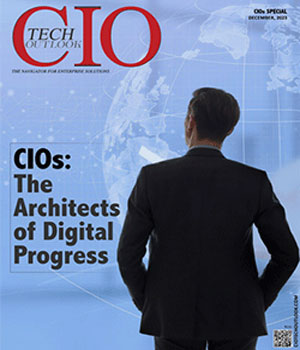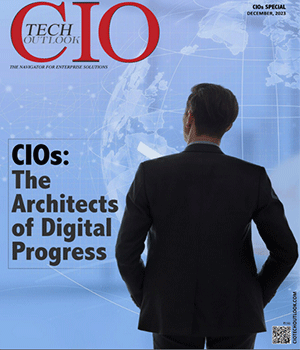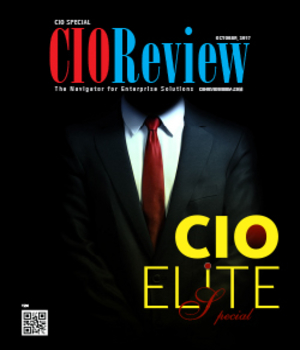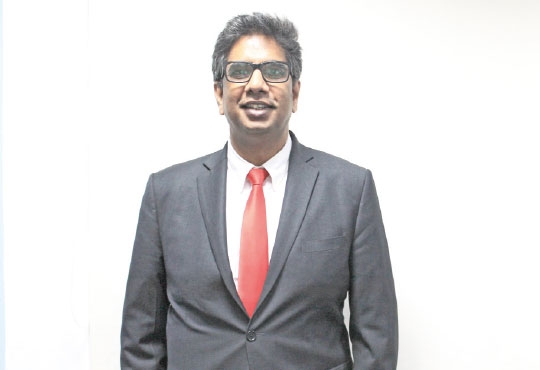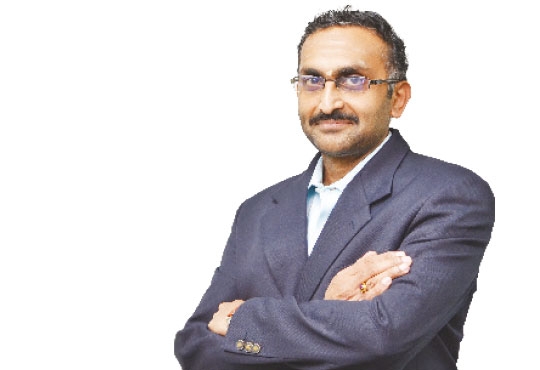
The Changing Role of the CIO
Dhiren Salva, Group / Global CIO Kuoni | Thursday, 05 October 2017, 12:50 IST
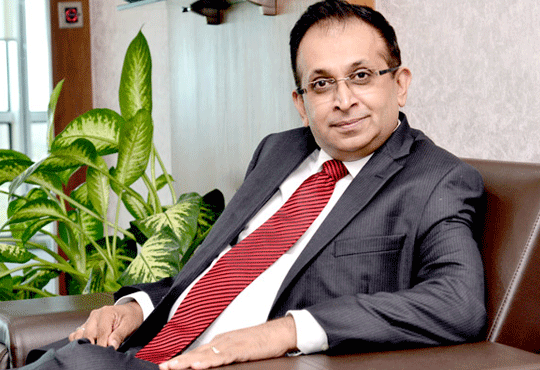 When I look back and see changing role of a Chief Information Officer or even of the IT function in various enterprises, I can simply link this to famous Darwin’s theory of Evolution.
When I look back and see changing role of a Chief Information Officer or even of the IT function in various enterprises, I can simply link this to famous Darwin’s theory of Evolution.
Flashback… when computers were introduced, they were never expected to be used for commercial usage. In 1943, Thomas Watson, President of IBM, had made a statement: “I think there is a world market for maybe 5 computers”. At that stage, the computer was primarily a computing device.
"Shelf life of novelty and innovation was shrinking by the day. The New generation of millennials started influencing lives and businesses"
In the next era of exploring something unknown, even though computers started getting introduced in the commercial world, the industry still did not see its usage beyond doing some computation, offline accounting and electronic record keeping. When a machine does all this work, and the manufacturer manages it for you, why do we need a department or person to run this? This was the time when a finance manager or some power user continued to bask in glory of knowing about computers.
Next phase was automation of various functions for industrial & commercial purpose. And something called EDP (Electronic Data Processing) function was born. This function was largely data processing, programing & MIS generating function. However, this was a good starting point for IT getting visibility. Still during this time, end users were not direct consumers of IT. Reports were asked for .. And EDP through some miracle,would generate those reports.
At this stage, some path-breaking things were happening around us silently. This was the time when personal computing was making fast inroads. PCs, DOS/Windows, GUI based screens, office automation had started touching people’s lives. And an even bigger phenomenon was catching up – The Internet! DEC founder Ken Olsen had made a statement in 1977 – “There is no reason anyone would want a computer in their home”. This prediction was falling flat…!
This led to two major things - creation of an IT function and the birth of large IT industry beyond manufacturers. Now there was clear segmentation of manufacturers focussing on technology – cheaper & powerful devices, software tools & mechanism of connecting all of them and another set of small to large IT players providing IT services.
This was a stage when IT became key support function and the term ‘IT’ began to be used frequently. The EDP manager became the IT manager and also started moving up in the hierarchy.
Come the late 90s and early 2000s, and two key events changed the positioning of IT. First was Y2K and second was now infamous dotcom boom of 2000. Suddenly, involvement of IT was required in all functions & activities - HR, Finance, Supply chain, Marketing, Customer Service, etc. A new Chief Technology Officer was born and he was here to stay. IT became an enabling unit, and the CTO started having a say in decision-making, and was running his own budget.
This was still happening in select few organizations and some mature organization created Chief Information Officer Role - more strategic & business-aligned.
The growth of internet was stupendous in the next 10-15 years. 16 million global users in 1995 became 361 million in 2000, 1 Billion in 2005, and 2 Billion by 2010!The world was changing and user profiles, preferences, behaviour, markets,and products were changing. Shelf life of novelty and innovation was shrinking by the day. The New generation of millennials started influencing lives and businesses.
Now having a strong IT function was non-negotiable for the business. IT was becoming more & more critical. In the last 5-7 years, CIOs role changed significantly. He became a contributor to business strategy and key business decisions. Active & continuous involvement in new product design, marketing strategy, business partnership, new market plans, M&A negotiations, and customer relationship became regular feature of CIOs profile.
So what were the big differences in this new CIO role? he started talking business language and not technology. His talks with CEO & management team was about ROI, TAT, Cash flows, TCO, CSI. He stopped talking about Oracle versus Microsoft! This was left to team below and more so, with technology partners (evolved from erstwhile technology vendors). His key KPI was to differentiate his company/ product from competition using technology. IT became a business differentiator. With this change, the CIO was positioned in leadership councils and boards.
To give an example of differentiation, two banks get compared on their service delivery and offering. We do not bother about branch network, staff and even ATM network which is interoperable.
One significant change during this journey of ‘support’ to ‘enabler’ to ‘differentiator’ has been a large part of positioning of IT. For years, IT function was a black box. Vendors & internal IT thrived and survived by mystifying IT. In the last 7-8 years this has changed and partners & internal IT has started demystifying the same. They stopped selling/ providing technology, and today it’s all about business solutions.
On the flipside, during this time, several pseudo CIOs started mushrooming in nooks and corners of organization, over simplifying things using Google-based information. Also, the CIO was faced with another challenge of doing balancing act - between compliance/ security & business needs.
Come 2017 - with close to 4 billion Internet users and a large part of users accessing Internet on mobile, next disruption is due. Today IT has become business and taxis (Uber/Ola), holidays (Yatra/Make mytrip), goods (Bigbasket/ Amazon/Flipkart), food (Zomato/ Scootsy/Swiggy) are products.
In the coming years, CIO will be a key driver for business strategy – expansion, growth to even survival. Usage and effective adaptation of cloud, mobile, social media, IOT, Analytics, AI, Machine learning, Blockchain as business tools (and not technology) will be key focus areas. It will be a journey from 90% delivery & operation focus to say, 25-30% in coming years.
With automation & robotics proliferating faster than what we could think of, CIO is going to be a business leader who is an Applied Technologist. With this development, we are set for the next big change for IT companies, IT functions and the overall industry.
CIO Viewpoint
Hyper-Converged Infrastructure: The Next Big...
By Amit Jaokar, EVP - IT, Choice International
Embracing Technology: Need of the Hour in BFSI
By Nikhil Bandi, SVP & CIO, Vistaar Financial Services
Three Pronged Approach For Digitization In Life...
By Ekhlaque Bari, EVP & Head Technology - Max Life Insurance
CXO Insights
A Glimpse of A Changed AI Perspective in India
By Dr. Vijay Srinivas Agneeswaran, Senior Director of Technology, Sapient
Social Networking and the Enterprise
By Arindam Sen, SVP, Schneider Electric
Digital Transformation - Darwinism Or Dwarfism?


